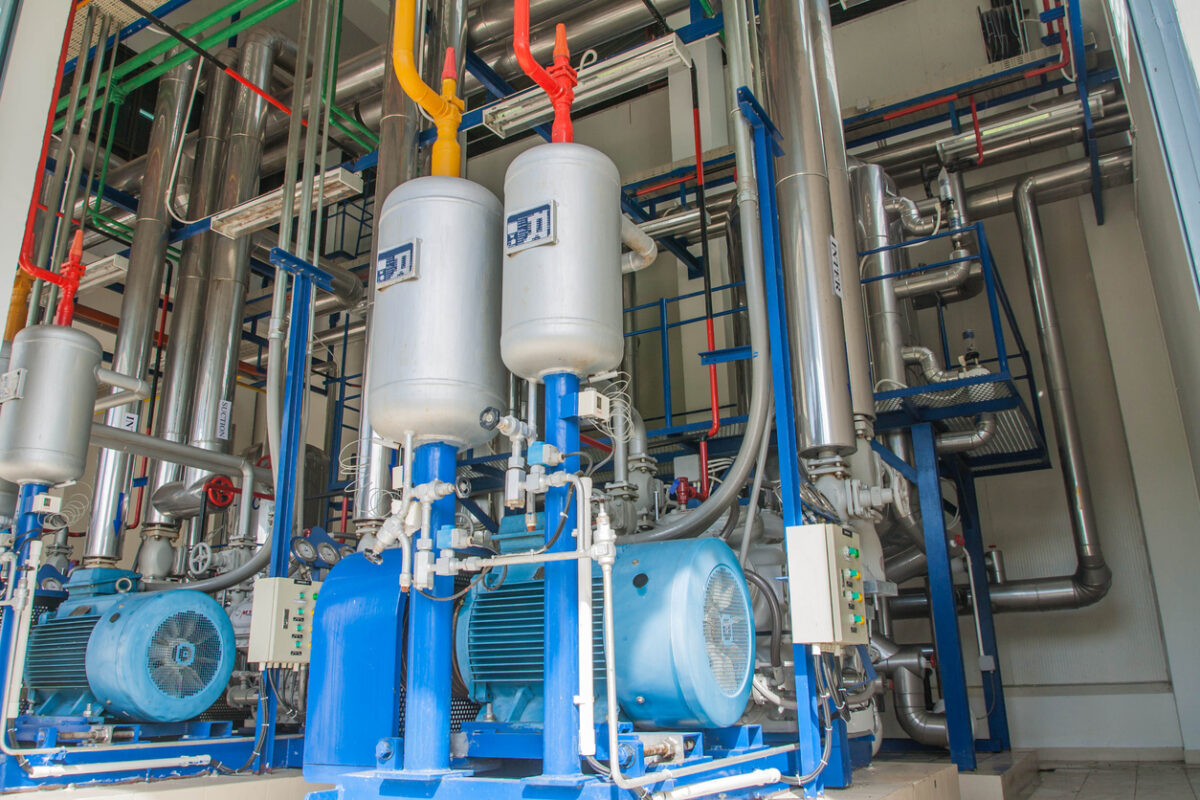With reciprocating compressors, the piston assembly stands as a critical component that plays a pivotal role in the compression process. This intricate assembly is composed of various parts, each with its own specific function, working together seamlessly to enable the compressor to fulfill its essential purpose.
In this article, we will delve into the different parts of a piston assembly and highlight its key role in the operation of reciprocating compressors.
The Heart of Reciprocating Compression
At the core of a reciprocating compressor lies the piston assembly, a dynamic and robust collection of components designed to handle the demanding task of compressing gases. Whether in industrial applications, refrigeration systems, or other specialized fields, reciprocating compressors rely on the piston assembly to perform the crucial function of compressing gas, thereby increasing its pressure and enabling various processes and applications.
The Parts of a Piston Assembly
The piston assembly is a complex ensemble of components, each contributing to its overall functionality. Let’s explore these parts in detail:
1. Piston Head
The piston head is the central component of the assembly, responsible for creating a seal within the cylinder. It moves up and down inside the cylinder bore, forming a tight seal against the cylinder walls. The piston head’s design and material are critical to maintaining effective compression and preventing gas leakage.
2. Piston Rings
Piston rings are circular bands that encircle the piston head. They serve two essential functions: sealing the gap between the piston head and the cylinder walls and preventing the leakage of compressed gas from the combustion chamber. Piston rings come in various designs and materials, tailored to specific operating conditions and requirements.
3. Connecting Rod
The connecting rod, often referred to as the conrod, links the piston head to the crankshaft. It plays a crucial role in converting the reciprocating motion of the piston into rotational motion, which drives the compressor’s crankshaft. The connecting rod must be robust and precisely engineered to withstand the high forces and stresses generated during compression.
4. Wrist Pin
The wrist pin, also known as the piston pin or gudgeon pin, connects the piston head to the small end of the connecting rod. It allows the piston to pivot and move freely within the connecting rod, ensuring smooth and precise motion. Wrist pins are typically made of durable materials to withstand the mechanical stress.
5. Piston Skirt
The piston skirt is the lower part of the piston, extending below the piston rings. It provides stability and guidance to the piston during its reciprocating motion within the cylinder bore. The design of the piston skirt is critical for minimizing friction and wear on the cylinder walls.
The Crucial Role of Piston Assembly
Understanding the intricate interplay of these piston assembly components is essential to grasp the vital role it plays in reciprocating compressors:
Efficient Gas Compression
The piston head and piston rings work in tandem to create a gas-tight seal within the cylinder. As the piston moves downward, it draws in gas through the intake valve. Upon ascending, the piston compresses the gas, significantly increasing its pressure. This compressed gas can then be utilized for various applications, such as powering tools, refrigeration, or industrial processes.
Reliable Mechanical Motion
The connecting rod and wrist pin enable the conversion of the piston’s reciprocating motion into the rotational motion required to drive the compressor’s crankshaft. This mechanical linkage must be robust and precisely engineered to ensure the compressor operates efficiently and reliably over extended periods.
Precision and Durability
The piston skirt, in addition to providing stability, plays a crucial role in minimizing friction and wear on the cylinder walls. This ensures that the piston assembly operates smoothly and that the compressor maintains its efficiency and longevity over time.
Ensuring Optimal Piston Assembly Performance
To maintain the optimal performance of a reciprocating compressor, it is imperative to ensure the proper functioning of the piston assembly. Here are some actions to consider:
- Regular Maintenance: Implement a routine maintenance schedule to inspect and replace worn or damaged piston assembly components, such as piston rings and connecting rods, to prevent potential issues.
- Lubrication: Proper lubrication of the piston assembly is essential to reduce friction and minimize wear. Ensure that the compressor is adequately lubricated according to manufacturer recommendations.
- Material Selection: Choose piston assembly components made from high-quality materials that can withstand the demands of your specific application and operating conditions.
- Precise Alignment: Ensure that the piston assembly components are precisely aligned and assembled to minimize friction, reduce heat generation, and enhance overall efficiency.
Conclusion
The piston assembly emerges as a true engineering marvel, orchestrating the transformation of gases and facilitating a wide array of applications. With its meticulously designed components—the piston head, piston rings, connecting rod, wrist pin, and piston skirt—it operates as a harmonious ensemble, converting reciprocating motion into valuable mechanical work.
By understanding the critical role of the piston assembly and taking proactive steps to maintain its integrity, you can ensure the reliable and efficient operation of your reciprocating compressor, ultimately contributing to the success of your applications and processes.
Contact KB Delta for information about compressor valve parts, compressor valves, and compressor valve repair kits.


